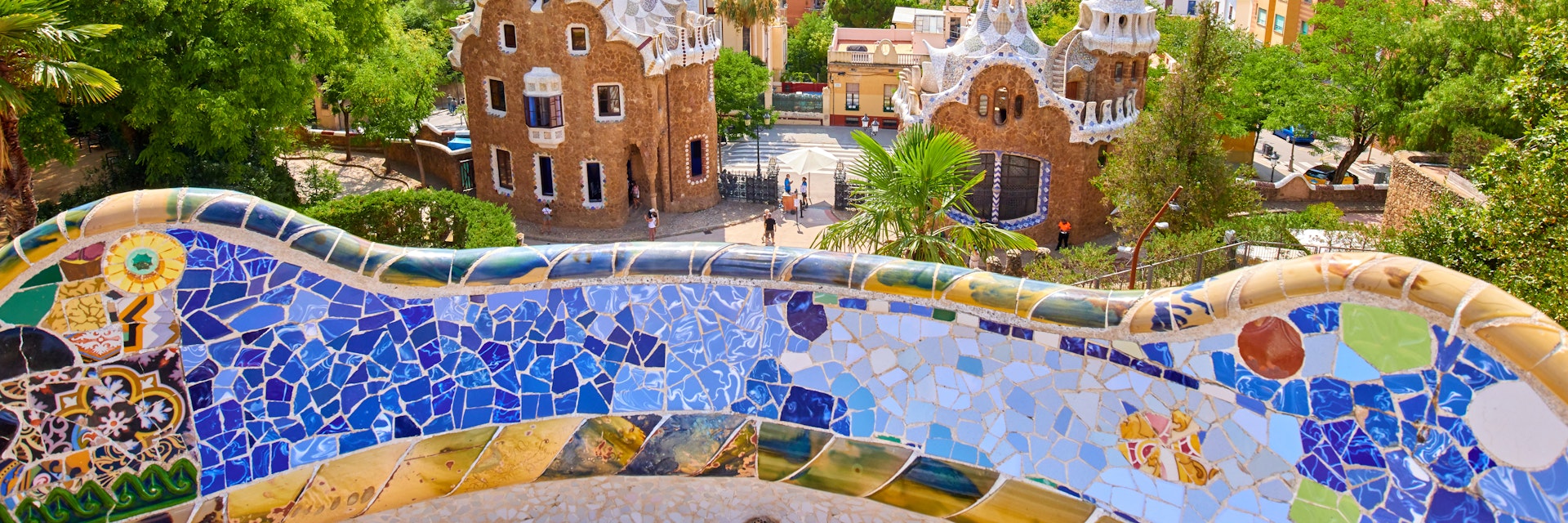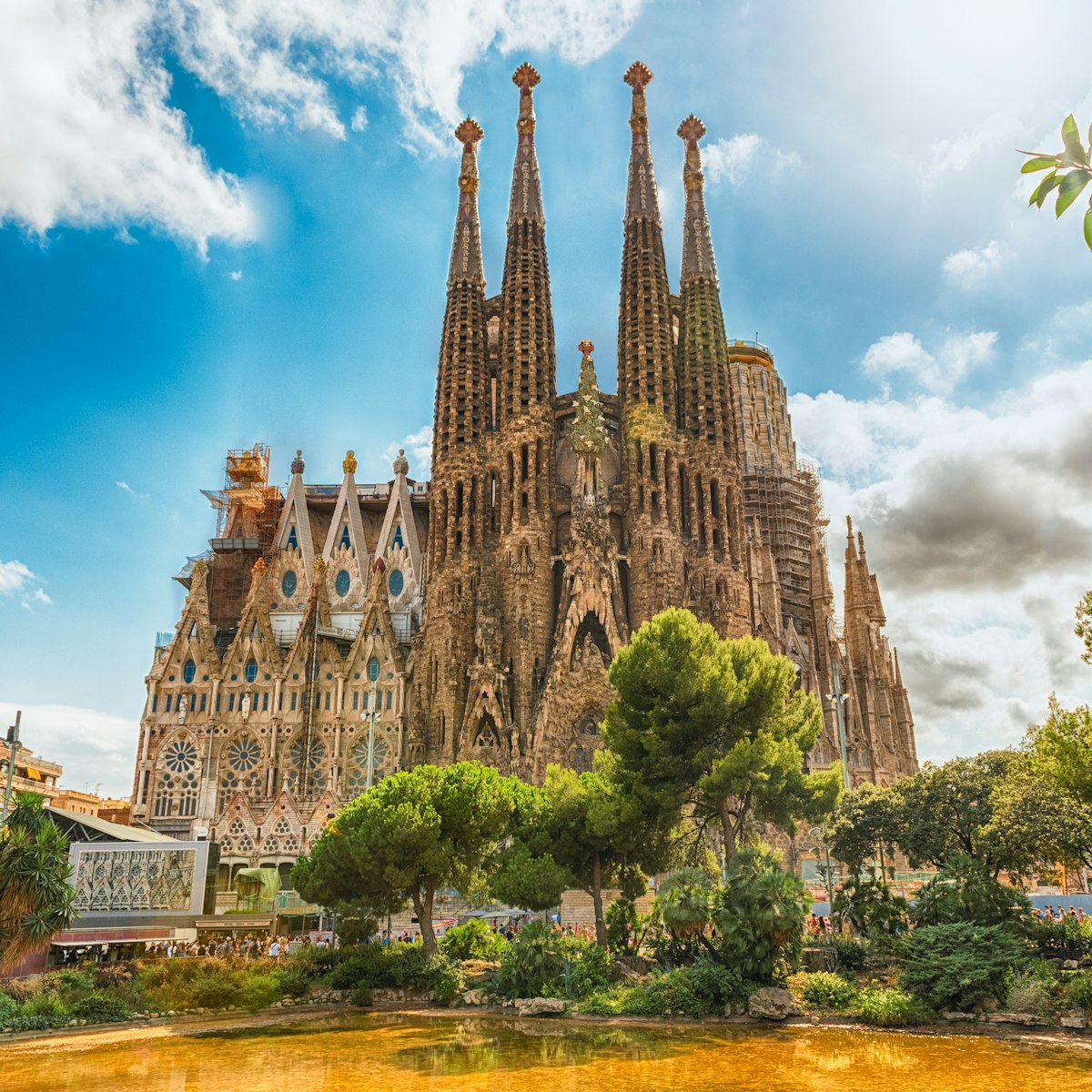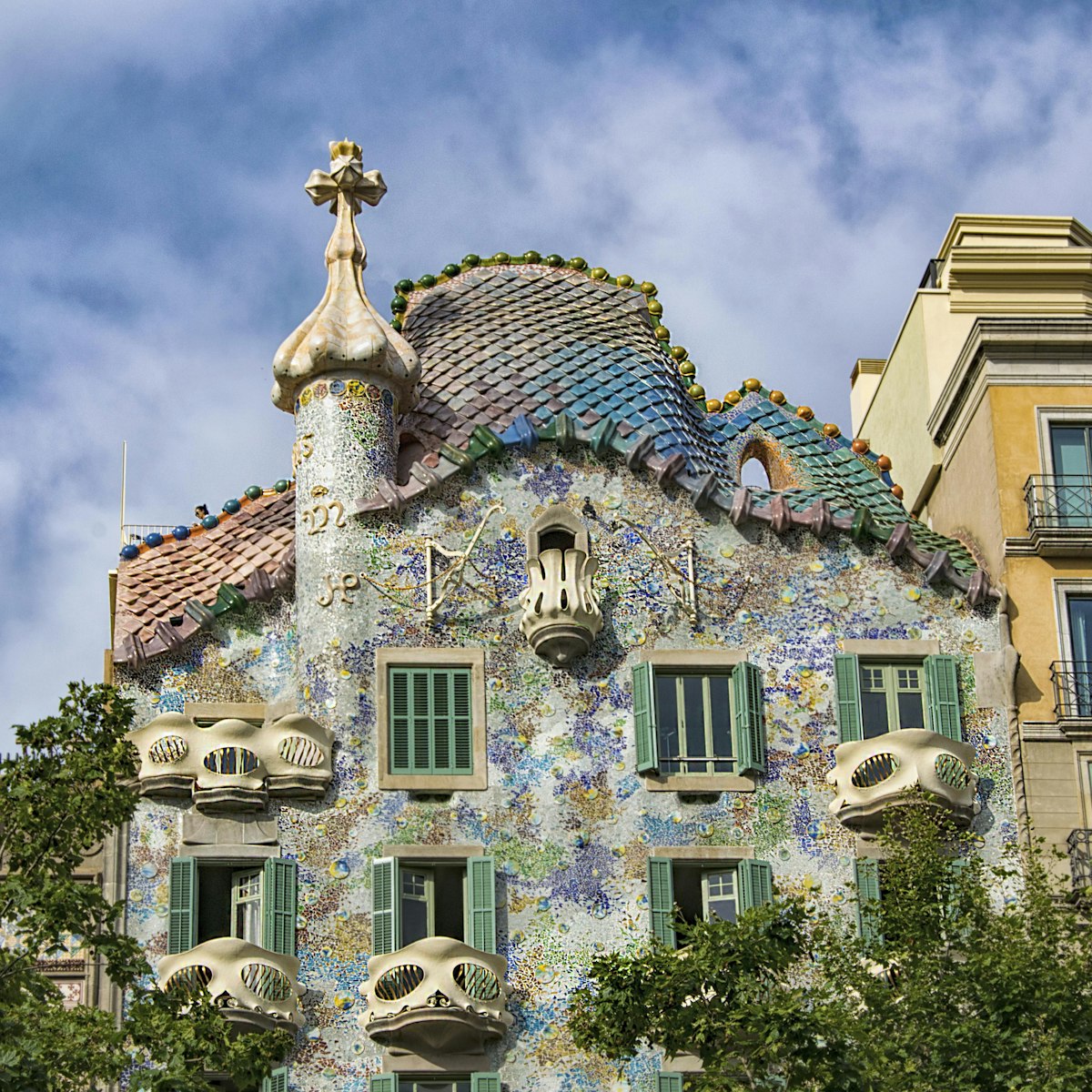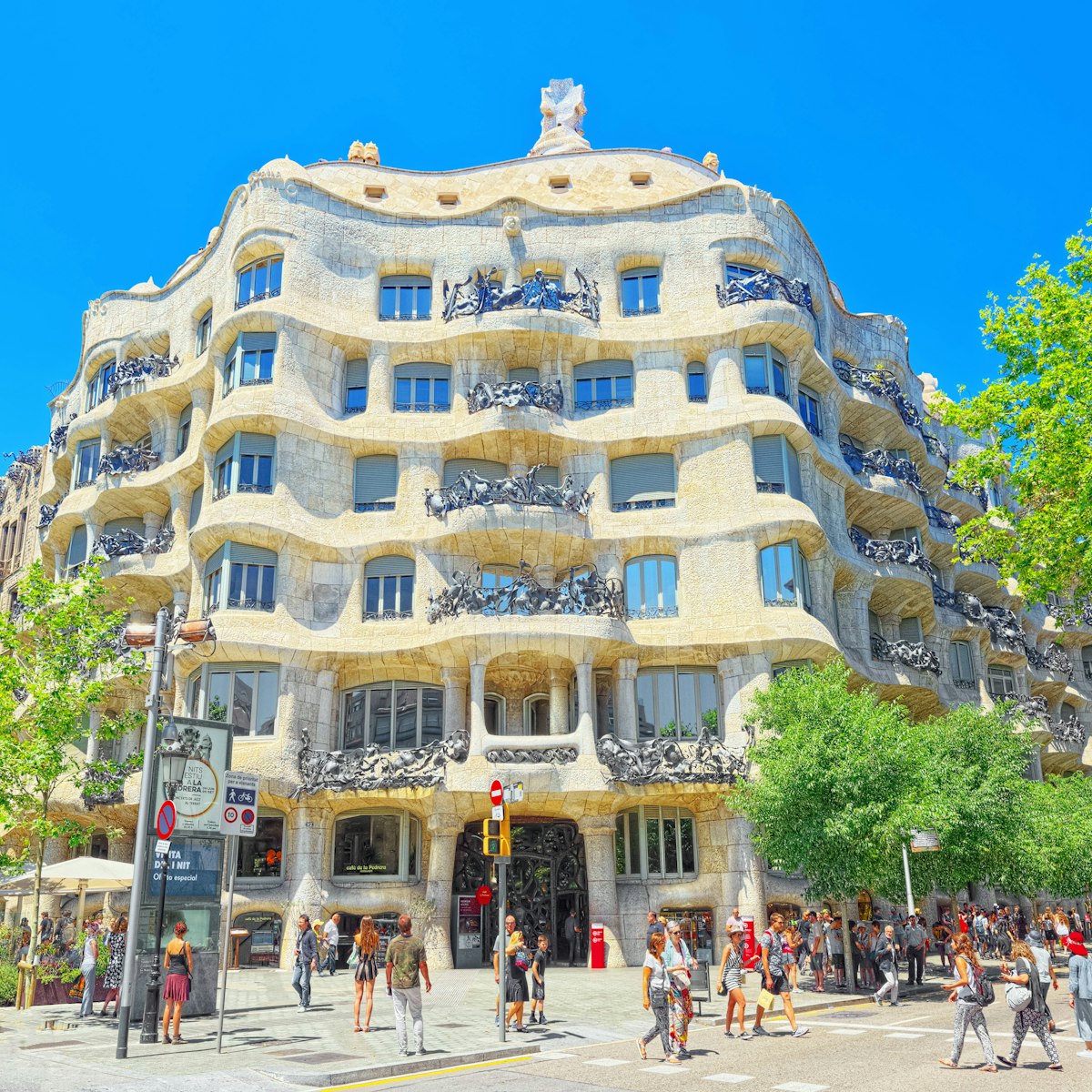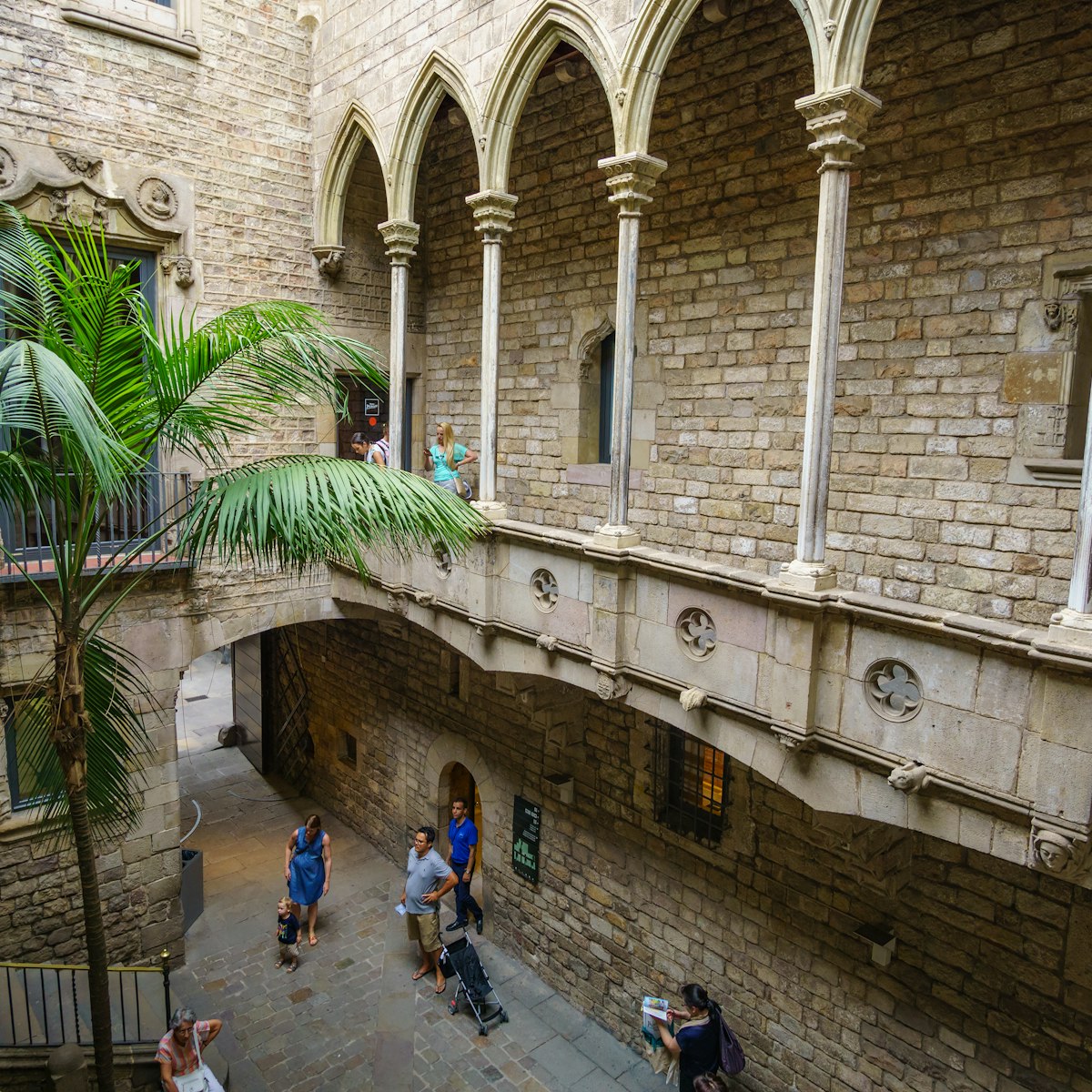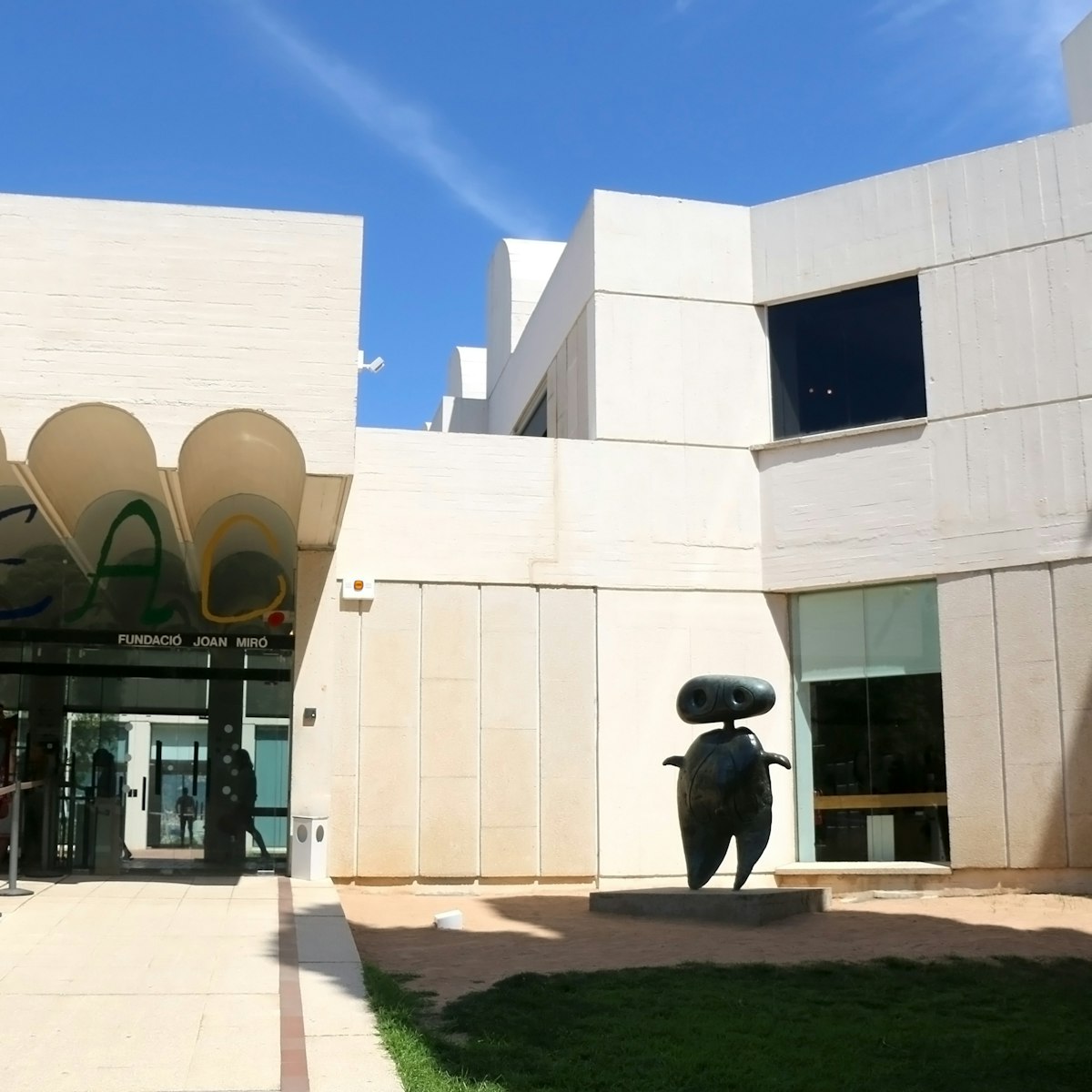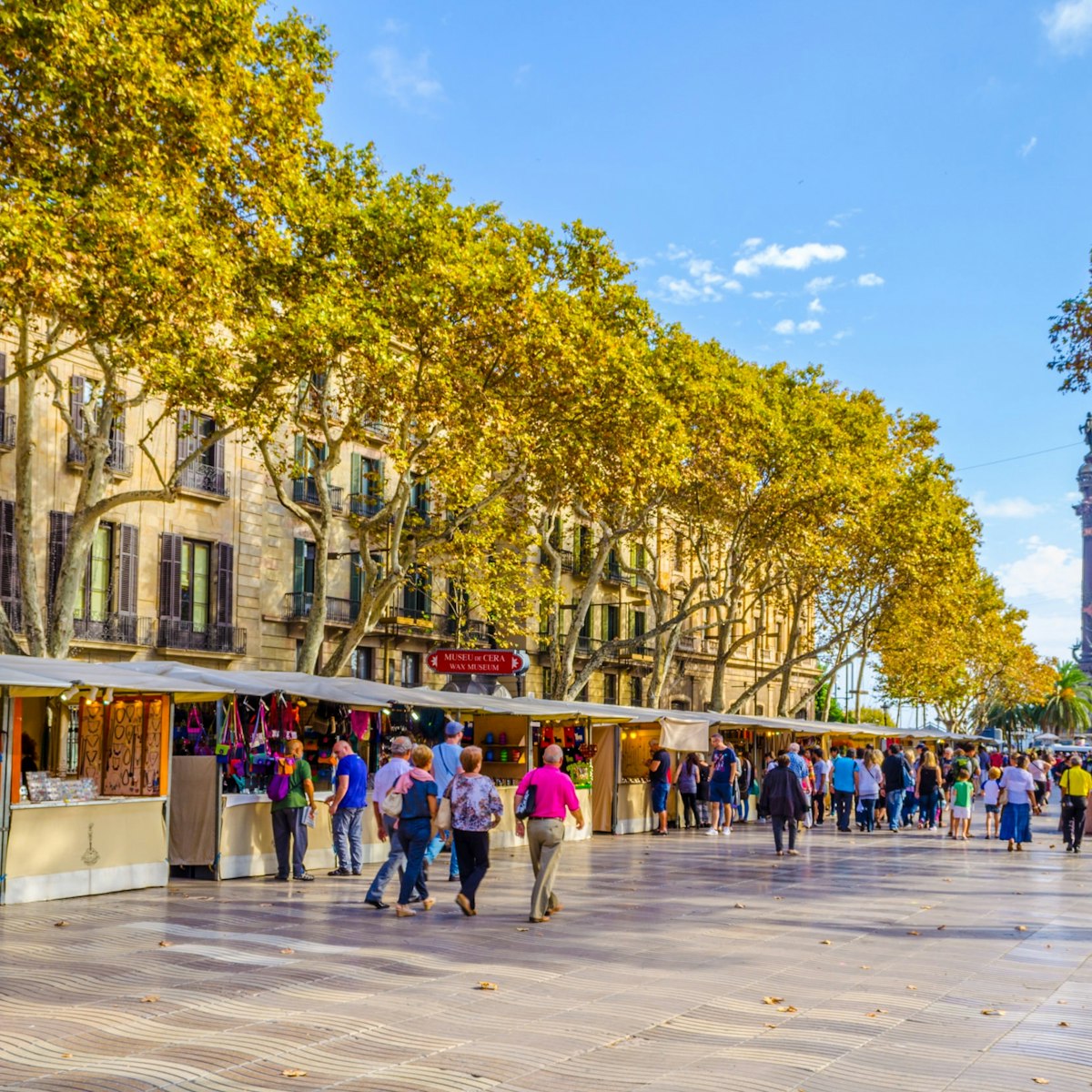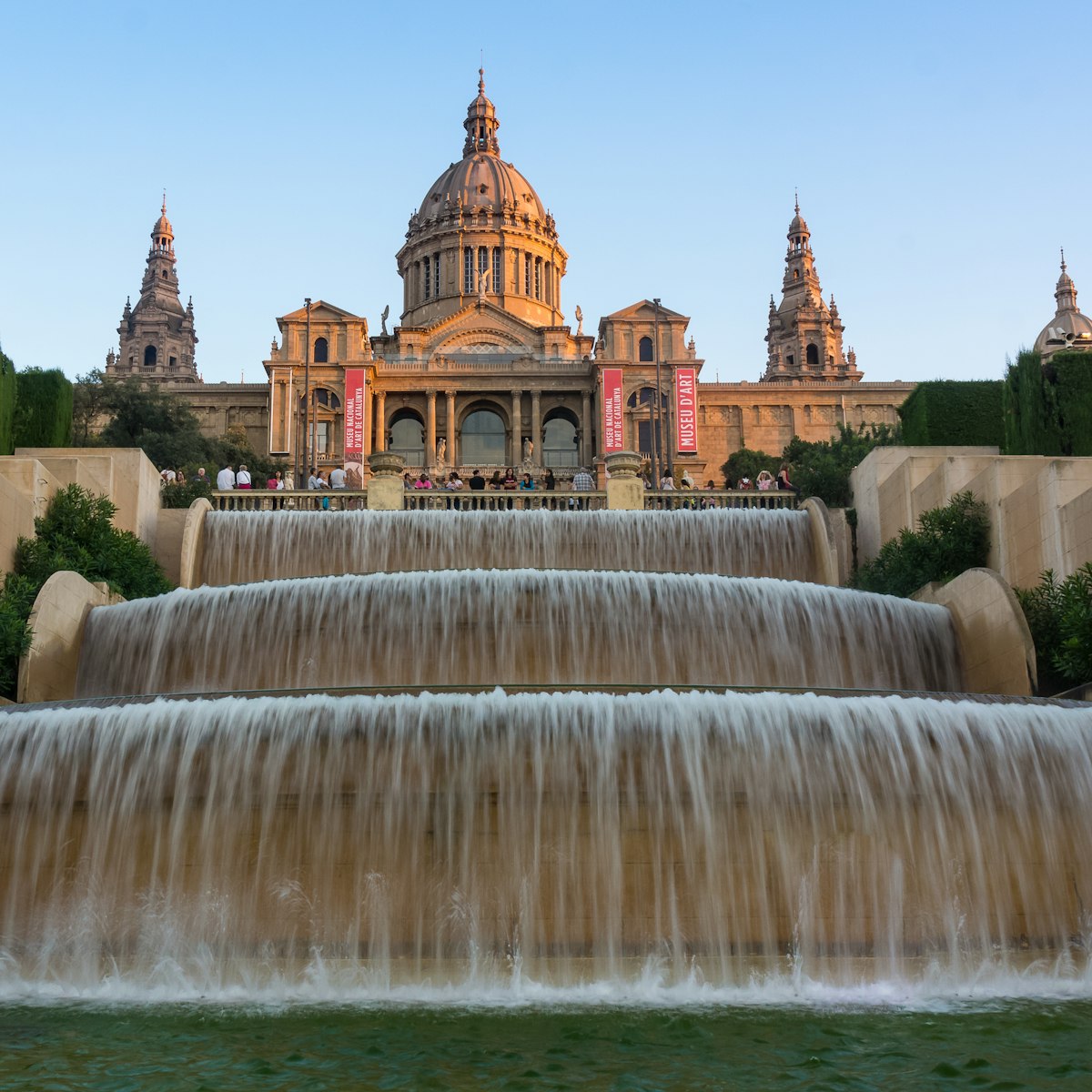Visitors and locals alike love Park Güell. The waving balcony and the colorful Guard’s House, with the imposing Barcelona skyline and sea in the background, is the city’s favorite postcard. It's also a great summary of what the Catalan capital is like: a creative, cosmopolitan city with a Mediterranean lifestyle.
Antoni Gaudí created Park Güell, an architectural masterpiece, with tree-shaped columns and undulating forms that merge in perfect harmony. The colors of the broken tile mosaics that cover the surface of the distinct elements is an unprecedented technique of Gaudí that makes the astonishing shapes come to life. It was also built in the middle of the city atop a hill, hence it is blessed with some of the best views in Barcelona.
Park Güell is one of the outstanding examples of Catalan Modernism and an unmissable destination for anyone visiting Barcelona.
History of Park Güell
The 1888 World Expo showed that Barcelona had become a modern metropolis, at a time when local artists and architects started to seek new forms of art and expression that represented urban elements. That’s how Catalan Modernism began to prosper.
It was then that local businessman and count Eusebi Güell ordered Antoni Gaudí to design a residential area for wealthy families. Güell’s idea was to recreate the popular British condominiums, which is why he named it Park Güell, instead of Parc Güell, its Catalan translation. This wasn’t the first time that Gaudí and Güell had worked together – Palau Güell, Celler Güell, Pavellons Güell and Cripta de la Colonia Güell, were all pieces of Modernism built by the architect for the count.
Construction began in 1900 but was abandoned in 1914 because they never managed to sell the different plots of land. Park Güell became a big private garden instead and Güell decided to give it up for public functions. Very quickly, the park began to show up in tourist maps and, not many years later, became one of the most visited spots in the city.
By that time, only two out of sixty planned houses had been built. Today’s Gaudí House Museum is one of those two houses, which the architect bought in 1906.
Eusebi Güell died in 1918 and his heirs sold the park to the Barcelona Council. It became a public park in 1926. In 1984, Park Güell became a UNESCO World Heritage site for its historical, architectural and artistic uniqueness.
How to visit Park Güell
Park Güell is essentially divided into two parts, the forest and the monument's area, where most of Gaudí’s work is concentrated.
The monuments can be accessed from Carrer d'Olot (Olot Street). The majestic entrance to the park is loaded with strong symbolism, with allegories and references to industrial development, the Catalan bourgeoisie and, of course, religion. The entrance represents the access to heaven. Interesting that it was intended to be the access to one of the most exclusive residential areas in Barcelona.
Beyond the entrance, the first elements you find are two cute Modernist buildings, Casa del Guarda, where the doormen used to sleep, which is now a museum, and Pabelló de l’Aministració, which houses a souvenir shop. Both buildings demonstrate the purest Gaudí style.
Continue walking and you will bump into the magnificent stairway, which features the most famous element in Park Güell, the 2.4-meter-long dragon, or salamander, a fountain covered with Gaudí’s technique of trencadís (broken tiles mosaic). Its real meaning is uncertain but most people believe it represents the natural element of fire, while others claim it refers to the crocodile emblem from Nîmes (France), Güell’s native town.
Climb over the stairs and you will find yourself in La Plaça (The Square), which is circled by the colorful, undulating bench, from which you get the imposing city views. La Plaça is supported by the 86 columns that form Sala Hipòstila.
The rest of Park Güell is the forest area, a set of trails and pathways which all form a proper city park where the local citizens go for a jog or a stroll. El Calvari is the highest point in the park (182m). Gaudí’s initial idea was to build a chapel there but instead, he built a calvary-shaped monument with three crosses. The views from the top are also stunning.
Park Güell tickets
In 2013, due to the exponential increase of foreign visitors, the Barcelona Council restricted access to the monuments in order to preserve the work of Gaudí. They limited the entrance by only allowing a certain number of people per hour and imposed a fee. The forest area, however, can be accessed for free.
- General admission: 10€
- Guided tour: 22€
- Private tour: 50€
Rates subject to change
If you want to avoid unnecessary queues, it is recommended to book Park Güell tickets online through the official website.
An entrance ticket allows you to visit the 12 hectares that comprise the park, including the monuments. For the Gaudí House Museum, you have to buy a separate ticket. Once inside the monument area, you can stay as long as you want but must enter no later than 30 minutes after the time specified on your ticket.
Best time to visit Park Güell
If you want to beat the crowds, the best time to visit Park Güell is on weekdays at 9:30am, when the park opens.
How to get to Park Güell
From Lesseps metro station (Line 3), it is a 15-minute walk to the monumental area main gate. From Vallcarca metro station (Line 3), it is also a 15-minute walk, but you access the park from the west.
For those coming by foot, Park Güell is within a 20-30-minute walk from anywhere in the districts of Gràcia and Sant Gervasi, but the Old City is not within easy walking distance.
Where to eat around Park Güell
The good news is that Gràcia is filled with inexpensive local eateries and tapa joints that are absolutely delightful. La Pubilla, for example, is considered to be one of the best restaurants in the city for traditional Catalan food. In addition, look for Bar Bodega Quimet for traditional homemade tapas. For slightly more modern and elaborate tapas, we recommend Vermuteria Puigmartí.
